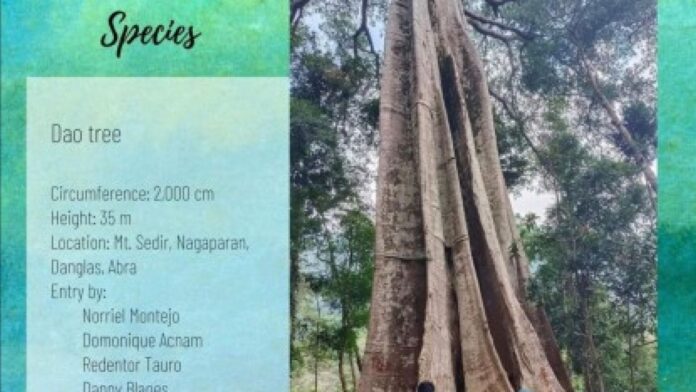The Department of Environment and Natural Resources (DENR) in Cordillera has identified the biggest trees in the region through a contest as part of the environment month in June.
Ralph Pablo, DENR-Cordillera regional director, in a message on Tuesday, said the contest aims to identify and locate the biggest trees growing in the region with the help of community members.
“It was made into a contest for those in the grassroots to inform us of what they have in their surroundings,” Pablo said.
The biggest tree among the coniferous species identified through the contest was a Benguet pine tree found in Gueday, Cayapas, Baculongan Norte, Buguias, Benguet. It measures 454 centimeters in circumference and 30.8 meters high.
The tree was found and submitted by Jona Cabaling, who received a prize of PHP25,000.
The second biggest tree from the same category was in Mt. Mapao, Agawa, Besao, Mt. Province, which has a circumference of 437 centimeters and is 15.24 meters high. The third was in Moling, Cayapas, Baculongan Sur, also in Buguias, Benguet.
For the broad-leaved species entries, the biggest were all found in Danglas, Abra province.
The biggest discovered and submitted as an entry in the broad-leaf category was a dao tree found in Mt. Sedir in Nagaparan, Danglas, Abra. It has a circumference of 2,000 centimeters and is 35 meters high.
In second place was another dao tree with a circumference of 1,400 centimeters and 30 meters high, while the third place was a pasakla tree with a circumference of 1,400 centimeters and 27 meters high.
Based on the contest mechanics, an entry can be a narra, dao, or a white lauan tree which belongs to the broad-leaved species, or a Benguet pine which belongs to the coniferous species of trees.
The mechanics specifically said an entry must be naturally growing in the Cordillera and was not planted.
The tree must be healthy and without signs of or symptoms of decay or diseases.
The contest was to engage the public during the celebration of the environment month and to identify century-old trees. (PNA)


